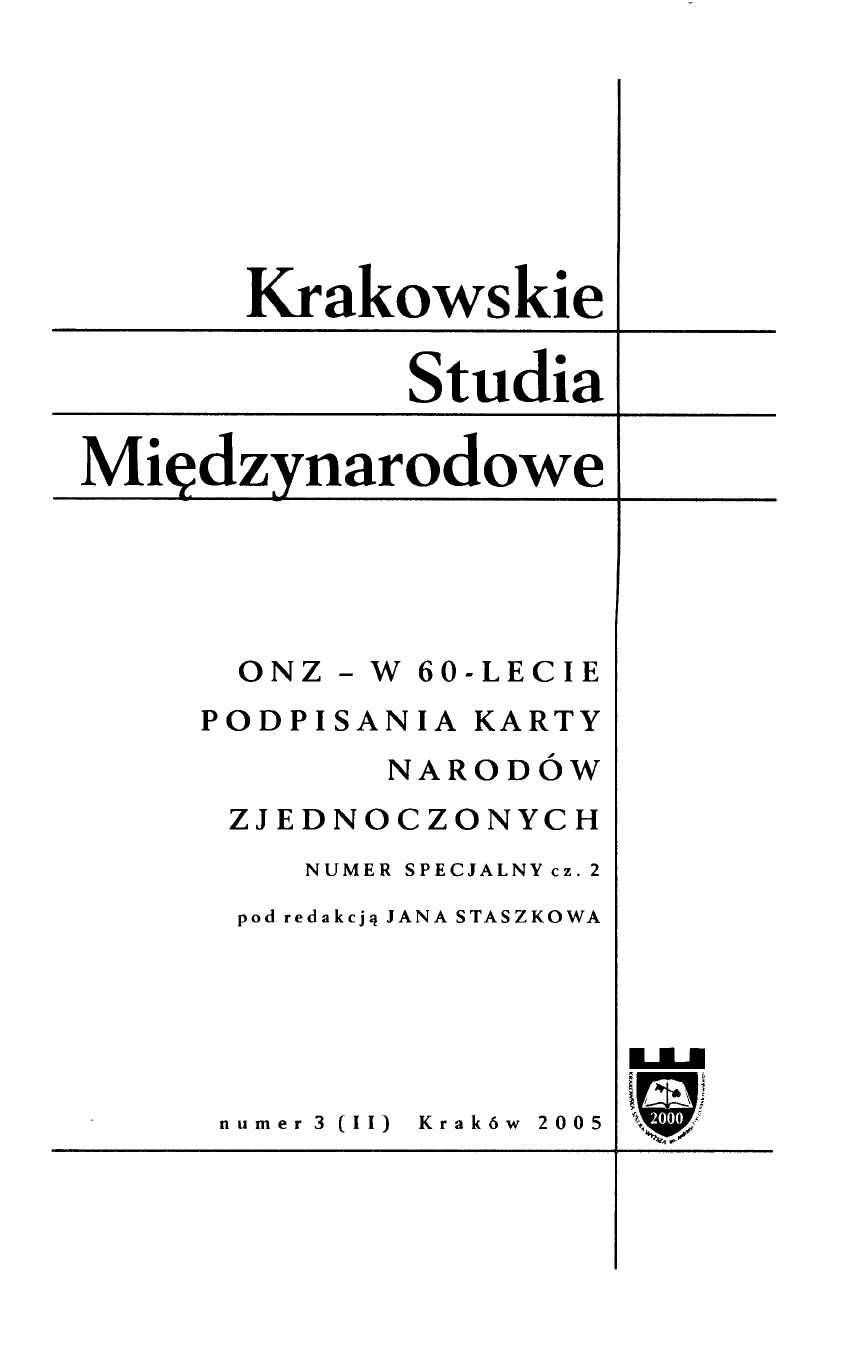
We kindly inform you that, as long as the subject affiliation of our 300.000+ articles is in progress, you might get unsufficient or no results on your third level or second level search. In this case, please broaden your search criteria.


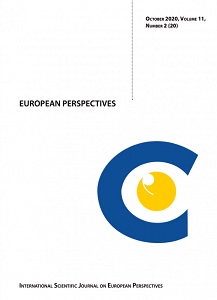
The Dayton Peace Accord brought an end to the war in Bosnia and Herzegovina and any agreement that ends a war tends to deflate criticism. Peace is always preferable to war. Nation building, however, is a process that extends beyond peace, and all agreements, Dayton included, must allow room for revision that serves greater unity and prosperity.
More...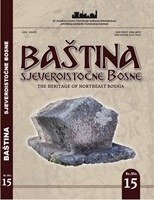
Before the aggression against the Republic of Bosnia and Herzegovina, Bosniaks, Serbs, Croats, Yugoslavs and Others lived together in Rogatica. In the total population of the municipality of Rogatica, there were 60.10% Bosniaks, 38.18% Serbs, 0.09% Croats, 0.85% Yugoslavs and 0.79% Others. In the town of Rogatica, Bosniaks made up 63.72% of the total population, Serbs 33.32%, Croats 0.18%, Yugoslavs 1.57% and Others 1.21%. The inhabitants of this area were used to community through educational, economic, cultural and sports life. The leadership of the Serbian Democratic Party (SDS) strove to implement the plans of Slobodan Milošević and the Serbian Academy of Sciences and Arts (SANU) to create ethnically clean areas where only Serbs would live. Since there were 60.10% Bosniaks in the municipality of Rogatica, and 63.72% in the city, that area as well as the entire Bosnian Podrinje had to be "ethnically cleansed". The goal of the SDS and the "Serbian forces" in the war against the Republic of Bosnia and Herzegovina was to kill and expel Bosniaks and Croats from Rogatica. The "Serbian Municipality of Rogatica" was founded, and on April 8, 1992, the Crisis Staff of the "Serbian Municipality of Rogatica", headed by Milorad Sokolović. Numerous war crimes were committed against the population of Rogatica, mostly Bosniaks: murders, rapes, beatings, mistreatment, humiliation, imprisonment in camps. In the period 1992-1995. year, all mosques, of which there were 23, and masjids, of which there were three, were demolished in the territory of the municipality of Rogatica. The only free area in the municipality of Rogatica was Žepa, which was declared a "protected zone" on May 6, 1993 by United Nations Security Council Resolution No. 824. After the fall of Srebrenica on July 11, 1995, Žepa was also attacked. The VRS, led by Ratko Mladić, also entered the UN protected zone of Žepa on July 25, 1995. The armed aggression against Bosnia and Herzegovina from 1992 to 1995 ended with the signing of the Dayton Agreement on December 14, 1995 in Paris. According to the Dayton Peace Agreement, Rogatica became part of the Bosnian entity Republika Srpska. The return of the exiled Bosniaks to the area of the Rogatica municipality was slow with many obstructions by the local and entity authorities. In the post-war period, many instigators and perpetrators of war crimes in Rogatica were accused and convicted. The political elite of the Republika Srpska in The Hague was convicted by the International Criminal Tribunal for the former Yugoslavia for war crimes committed in the municipality of Rogatica: President Radovan Karadžić was sentenced to life in prison, Vice President Biljana Plavšić to 11, and Speaker of the National Assembly Momčilo Krajišnik to 20 years in prison. In 2013, the population census was carried out in Bosnia and Herzegovina. It was the first list after the war and aggression. In 2013, 10,723 inhabitants lived in the municipality of Rogatica, which was 11,255 less than in 1991. There were 1,117 Bosniaks, which was 12,092 less than in 1991. The number of Serbs in the period 1991-2013 increased from 8,391 to 9,527, which was an increase of 1,138 persons, and there were 19 Croats, as in the 1991 census. There were 12 people who did not declare themselves, 43 did not answer and the other 5. The town of Rogatica had 6,522 inhabitants in 2013, which is 2,394 less than in 1991. There were 82 or 5,599 fewer Bosniaks than in 1991. There were 6,390 Serbs or 3,419 persons more than in 1991. The number of Croats decreased from 16 to 13, and all the others were 37, which is 211 less than in 1991. The municipality of Rogatica, which consisted of 118 settlements, had 10.41% Bosniaks in the total population in 2013, which is 49.69% less than in 1991. 88.85% were Serbs, which is 50.67% more than in 1991. In the town of Rogatica, there were 1.26% Bosniaks and 97.98% Serbs in the total population. There were fewer Bosniaks by 62.46%, and more Serbs by 64.66%. Rogatica is an example of how murders, expulsions, intimidation, rape and other forms of war crimes can change the ethnic structure of the population of a municipality and city.
More...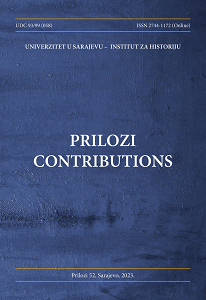
Official insignia and symbols are important means of building and expressing identity in all armies. Everything that can be included in this category – and in this paper we paid attention to symbols of affiliation, uniforms, flags, ranks, manners of saluting, war medals, insignias and oath forms in the Army of the Republic of Bosnia and Herzegovina during 1992-1995 – except for the identification function on the battlefield and one’s surrounding, at the same time shows traditions of the people and the states as well as political, social and civilizational values that an army defends. From their beginnings, all elements of identity expression through insignia and symbols in the Armed Forces of the Republic of Bosnia and Herzegovina were based on medieval Bosnian state traditions and the heraldic legacy of the Kotromanić ruling dynasty. This should have enabled acceptance of the symbols by all citizens and constituent peoples of Bosnia and Herzegovina. Until the beginning of August 1992, a unique sign of affiliation was stylized, the basis of which was the national coat of arms with crossed swords below it, and above it was a mandatory logo of Army of the Republic of Bosnia and Herzegovina. Military flags of the Army of the Republic of Bosnia and Herzegovina were white in colour with a unique symbol of affiliation in the central part and with printed name of the unit. The appearance and types of the war awards also corresponds to the stylization of state and army symbols. Based on the same tradition, the material features of military ranks were created, as well as the concept of war awards that did not have a material feature. The influence of this traditional source is noticeable in the form of the military salutation and the text of the Oath of the Army of the Republic of Bosnia and Herzegovina.
More...
This paper systematically and empirically explores participation in the first 10 months of the Croatian Homeland War through theories of collective action. It tests the theory that in the face of indiscriminate violence, individuals will choose to participate in a conflict through joining an armed organization that can provide them with the resources to better survive. I hypothesize that as violence increases in a given area, the number of individuals joining the Croatian military forces will also increase. Using a dataset of daily event data and the number of participants per municipality, I test this hypothesis in a generalized linear model. The results show a significant relationship exists between violent events and increased participation.
More...
Belgrade, July 11, 2012. This year marks the 17th anniversary of the Srebrenica genocide. As years go by, new evidence of this horrible crime accumulate. Many sentences either for or closely related to the Srebrenica have been passed in ICTY. On the grounds of these sentences the International Court of Justice decided that genocide had been committed in Srebrenica. An interim sentence imposed on Slobodan Milosevic in ICTY also indicates his responsibility and thus the responsibility of Serbia for this crime.
More...
Beograd, 10. juli 2012: Ove godine se obeležava 17 godina od genocida u Srebrenici. Svake godine se kumuliraju novi dokazi o tom strašnom zlocinu. U Haškom tribunalu donete su brojne presude koje se odnose na genocid u Srebrenici. I Međunarodni sud poravde je na osnovu tih presuda utvrdio da se u Srebrenici desio genocid. Međupresuda u procesu protiv Slobodana Miloševića takođe govori o njegovoj odgovornosti, odnosno odgovornosti Srbije, za taj zločin.
More...
When word reached Serbia that a UN General Assembly Resolution would designate July 11 as the International Day of Reflection and Commemoration of the 1995 Srebrenica Genocide, Nemanja Stevanović, Permanent Representative to the UN from the Republic of Serbia, wrote a letter to the UN Secretary General to warn against the “dangerous consequences” of such a Resolution. Serbia’s representative warned, moreover, that the adoption of the Resolution could “provoke action” against the peace and stability of Bosnia and the region.
More...
Kada je u Srbiju stigla vijest da će Rezolucijom Generalne skupštine UN-a 11. juli biti proglašen Međunarodnim danom sjećanja na genocid u Srebrenici 1995. godine, Nemanja Stevanović, stalni predstavnik pri UN-u iz Republike Srbije, napisao je pismo generalnom sekretaru UN-a da bi upozorio na “opasne posljedice” takve Rezolucije. Predstavnik Srbije je, osim toga, upozorio da bi usvajanje Rezolucije moglo “isprovocirati akciju” protiv mira i stabilnosti BiH i regije.
More...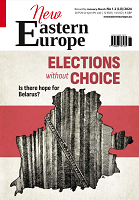
Despite having died over 17 years ago following his war crime tribunal in The Hague, Slobodan Milošević continues to make a mark in Serbian politics. Helping to understand his legacy and why it lives on should be the first step in overcoming the divisive politics of today. This will ultimately redirect Serbia back on the path to integration with the West.
More...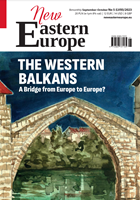
The continued power of nationalist ideas and narratives in Bosnia and Herzegovina has all but destroyed any social or political cohesion. Ethnic divisions have hindered the establishment of a unified political system and resulted in permanent political deadlock. Nationalist rhetoric continues to fuel political conflicts, further deepening resentments and prejudices.
More...
At the age of 36, Vladimir Miketa retains few memories of the war and his past. However, what bothers him most is people’s attitude towards the environment in his area and how authorities manage waste in the region. As a passionate mountaineer and nature lover, he often explores the surrounding area during his hikes. It was during one of these excursions that he discovered a road leading to the village of Lončari.
More...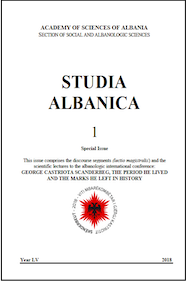
The project of Gjergj Kastrioti Scanderbeg about the establishment of a centralized Albanian state,2 collided with the Republic of Venice, an important factor of international relations, since the beginning. Scanderbeg and Venice split on one essential question, the attitude towards the Ottomans. While Scanderbeg followed the policy of uncompromised war against them, the Republic of Venice until 1463 followed the policy of peace and dirty bargains with them. From the other side, in the case when the Hero returned to his homeland, on 1443, Venice had occupied the most vital centres of the Albanian coast, without which the centralized state dreamed by Scanderbeg was only incomplete. Differently from Balshaj, who until 1370, in the chaos that subsequently followed the fall of the Serbian Empire, became rulers of the important cities of the Albanian area such as Shkodra, Drisht, Ulqin, Tivar, Budva, Prizren, Peja, Novobërda, Vlora, Berat, and Durrës from 1384,3 Scanderbeg except some cities in the inner Albania, couldn’t possess none of the important coastal centres.
More...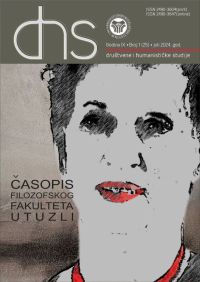
Diplomacy in the conditions of aggression represented a painstaking multi-layered job, which was not easily implemented. The development of Bosnia and Herzegovina’s diplomacy should be observed immediately before the declaration of independence of the Republic of Bosnia and Herzegovina in March 1992, because significant events took place a year earlier that would to a certain extent affect the recognition of Bosnia and Herzegovina as an independent state, as well as the international positioning of this country due to the war period. Although official Bosnian diplomacy can only be spoken of after the recognition of the independence of Bosnia and Herzegovina, and the establishment of competent state institutions, the year 1991 was extremely important, because the lobbying carried out by Bosnian politicians at the time on the international level, both in the West and in the East, was of great importance. importance, which certain international leaders confirmed when recognizing the independence of Bosnia and Herzegovina or establishing official diplomatic relations in the first months of 1992. Immediately before the holding of the Referendum on the independence of Bosnia and Herzegovina, the Government of the SR of Bosnia and Herzegovina had intensive contacts with officials from outside the then Yugoslavia, which was a kind of prerequisite for the later establishment of official diplomatic relations. The aim of the paper is to present the key events that were of great importance in the establishment of diplomatic contacts of Bosnian officials with the rest of the world, to clarify how Bosnian diplomacy developed in the conditions of aggression against the independent Republic of Bosnia and Herzegovina.
More...
This article explores how the authority of the International Court of Justice (ICJ) is perceived in fatwas on genocide and war crimes committed in Bosnia and Herzegovina during the 1992-1995 war. Sources include the ICJ’s judgement in Bosnia and Herzegovina v. the Federal Republic of Yugoslavia (Serbia and Montenegro); verdicts of the International Criminal Tribunal for the Former Yugoslavia; two fatwas from the Islamic Community in Bosnia and Herzegovina’s Council of Muftis on war crimes against the Bosniak populations of Srebrenica, Žepa, Prijedor and the Sana Valley; and preparatory materials written by expert groups that preceded the fatwas’ issuance. Despite initial criticism of the localisation of genocide in the ICJ’s judgement, the fatwas recognise its authority in cases that apply the Genocide Convention. The argumentation of these fatwas is based on the higher objectives of Islamic law (maqasid al-Sharia), in accordance with the role of Islamic normativity in a secular state.
More...
Review of: Mesud Šadinlija, Foča od postanja do nestajanja: prilog za historiju genocida nad Bošnjacima, Sarajevo: Dobra knjiga, 2023. 529 str. ISBN 978-9926-25-076-8
More...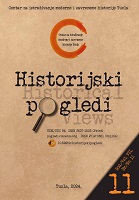
The 1992-1995 war in Bosnia generated a significant interest across the Atlantic. For three-and-a-half years, Bosnia was present in the American public life with continuous media reports of the war and the genocide being perpetrated in this part of the Balkans. American policymakers in the George H. W. Bush and the Bill Clinton Administrations grappled with formulating a response to the war. While the executive branch took hesitant steps in response to the war, a number of American legislators led the way in seeking an assertive US role in Bosnia. Before the war broke out in Bosnia in spring 1992, several American legislators had taken an interest in the crisis in the rapidly dissolving Yugoslavia. Bob Dole, the Kansan Republican, was a leading voice calling for a tougher response. From 1992 onwards, Dole was joined by a number of other senators and congressmen on both sides of the aisle in advocating for air strikes and a lifting of the UN-imposed arms embargo on Bosnia. These congressional Bosnia hawks led a sustained campaign aimed at keeping the US focused on Bosnia and adopted landmark legislation in support of the newly independent state in Southeast Europe. Senator Richard Lugar, an Indiana Republican and an influential voice on foreign affairs, did not belong to this core group of congressional Bosnia hawks. These hawks, including Senators Bob Dole and Joseph Lieberman, and Representative Frank McCloskey, along with a dozen other legislators, were at the forefront of congressional efforts to shape America’s policy towards Bosnia. Unlike these Bosnia hawks, Lugar did not lead the charge in seeking to steer US policy towards Bosnia. The Indiana Republican was neither a persistent advocate on Bosnia which was a characteristic of the congressional Bosnia hawks. But, he did weigh in on Bosnia starting in 1992 and advocated the use of American force in response to the war in Bosnia. Lugar also voted in favour of a series of legislative efforts aimed at supporting Bosnia from the Capitol Hill. This moderate support was still significant for Bosnia as the state mounted a determined defense of its statehood and citizens from 1992 to 1995. Lugar’s Senate papers located at Indiana University Libraries in Bloomington, IN offer insights into how the veteran senator viewed Bosnia and the policies that he advocated. To date, no study of Lugar’s policy towards Bosnia has been researched and his papers on Bosnia represent a first in-depth look at the senator’s views on the war. Drawing on these original documents, this paper seeks to piece together the story of how Senator Lugar reacted to the Bosnian War. It is a story of his support for Bosnia but one which was neither persistent nor forceful compared to Bob Dole and other pro-Bosnia voices on Capitol Hill. Still, as an independent and internationalist Republican, Lugar left a mark on his nation’s foreign policy including towards Bosnia. This paper, then, further seeks to contribute to the existing literature on the variety of America’s responses to the Bosnian War but also to shed light on Senator Lugar’s little-known effort to shape the US policy towards Bosnia in the early 1990s.
More...
Cyclically for several centuries in Bosnia and Herzegovina, there have been carried out crimes against humanity, serious violations of the Geneve Conventions and violations of the laws and customs of war and other crimes against the protected persons and social groups. Crimes are usually committed during armed conflicts. The mass crimes committed in Bosnia and Herzegovina in the previous two centuries were primarily determined by the ideologies of territorial nationalism and the projects for their realisations by the neighbouring Croatia and Serbia. Additionally, in the armed conflict in Bosnia and Herzegovina in the period 1992-1995 numerous crimes against humanity, serious violations of the Geneva Conventios, violations of the laws and costums of war and other crimes against protected objects, in its individual and mass nature, were also committed including the most serious crime that humanity has experienced since its inception- the crime of genocide. The Serbian-Montenegrin aggressor committed numerous forms of crimes against humanity and international law in all occupied towns and cities of the internationally regonised state and and a member of the United Nations (UN). The attacks on the area of the municipality of Rogatica whach are the subject of this research are considered to be the pattern which the aggressor (Federal Republic of Yugoslavia) and its collaborators (Bosnian Serbs) used in order to completely exterminate Bosniaks from the territory of the Republic of Bosnia andHerzegovina which they intended to occupy militarily. The intention and method of committing Serbian crimes in the area of Podrinje, which also included the municipality of Rogatica, during the Greater Serbian aggression in 1992-1995 are the same as the chetnik crimes against the Bosniak population during the World War II. Zepa, the largest of the ten local communities in the municipality of Rogatica, became a small Bosnian enclave during the aggression against the Republic of Bosnia and Herzegovina that resisted the attacks and blows of a far superior enemy until the middle of 1995. Resolution No.824 declaring Zepa a „safe zone” of the United Nations was adopted on May 6, 1993 by the UN Security Council. The aggressor continued the coordinated and systematic „cleansing” of the Bosniak population from that area consciously ignoring the fact that Zepa was declared a „safe zone” by the UN. The attacks on the Bosniaks of Zepa were not of different character compared to the attacks on other areas of the Republic of Bosnia and Herzegovina, especially Podrinje. Attacks on Bosniaks as an ethnic, national, national and religious group as a whole, and therefore those from the area of Zepa, were an integral part of the Greater Serbian ideology, policy and practice of creating the so-called Great Serbia. This research aims to shed light on the importance and status of the UN „safe zone”, the attitude of the international community towards the aggressor and the victims, the aggressor's activities up to the complete occupation of this „safe zone” and the crimes committed against Bosniaks.
More...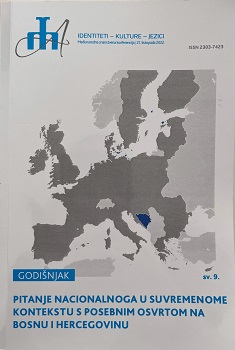
In the paper, the authors deal with the analysis of the functioning of the camps of the Army of Bosnia and Herzegovina, which primarily had the function of erasing the national identity of the Croats, whose existence was contrary to the provisions of international (wartime) humanitarian law, i.e. the 3rd Geneva Convention on the Treatment of Prisoners of War of August 12, 1949. In the paper, the authors will perform a complete analysis of the criminogenic actions of individual members of the BiH Army towards captured Croatian civilians and members of the Croatian Defense Council (HVO) during the fiercest armed conflicts between Bosniaks and Croats, i.e. during the Homeland War in BiH (1992-1995). Part of the command structure of the Army of Bosnia and Herzegovina had as its goal the destruction of the national identity of the Croats in Bosnia and Herzegovina, especially in the area of central Bosnia and other areas of Bosnia and Herzegovina where they did not represent an absolute majority. Namely, some Bosniak commanders behaved as if the area where the Croats had been living for centuries was terra nullius, i.e. a no-man’s land where they could ethnically cleanse, according to their own “natural right”, to make a state exclusively composed of members of the Bosniak nation. The paper used the description method, the historical-narrative method, the content analysis method, the synthesis method, the counting/enumeration method, and the oral (oral) history method. According to available data for 23 municipalities, that is, 331 camps of the Army of Bosnia and Herzegovina, 14,444 Croats were detained, of which 10,386 were civilians and 4,098 members of the HVO. 632 Croats were killed in the camps, and fifty of them were ritually killed by members of the El Mujahid unit, which was composed of radical Mujahideen, foreigners and Muslims from Bosnia and Herzegovina, and operated as part of the 3rd Corps of the Army of BiH.
More...